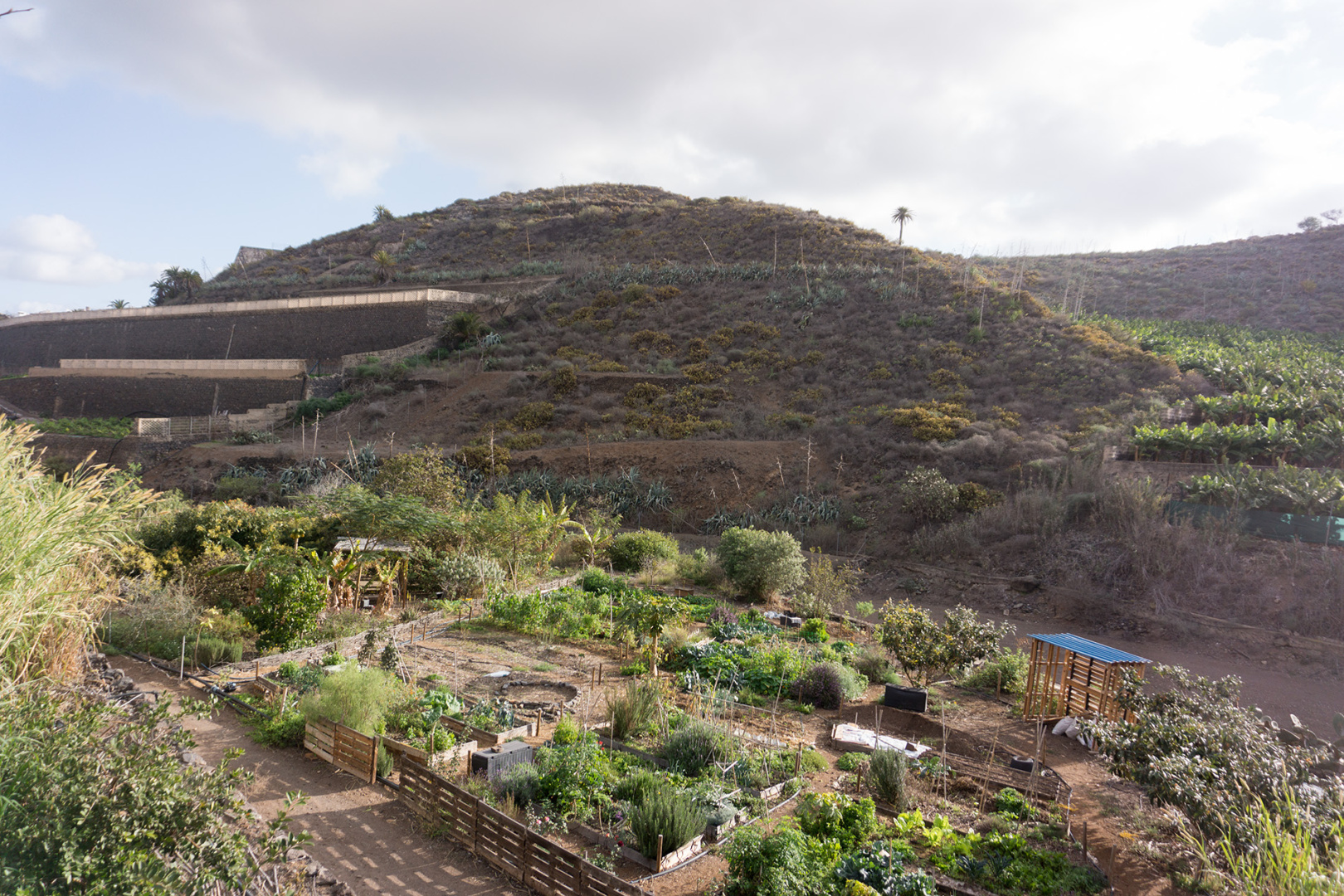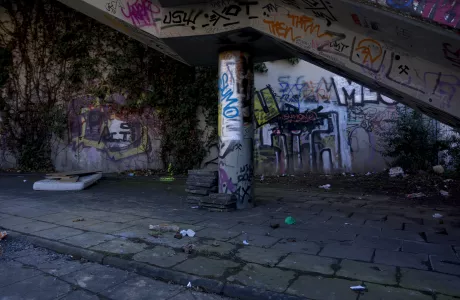
- < prev
- Photography
- next >
- 1 of 17
Just beyond the bustling streets of Las Palmas, where the dry hills of the Barrankas stretch toward the sky, a quiet revolution is taking place. Nestled in this rugged landscape, a small farm thrives, defying the arid terrain with an abundance of greenery.
At first glance, the contrast is striking. The surrounding hills, covered in hardy shrubs and cacti, seem untouched by time, shaped by wind and sun. But step into the farm, and the scene changes entirely—lush garden beds, thriving fruit trees, and rich, living soil tell a different story. This is a place where nature is being restored, where food grows in harmony with the land, and where farming is about giving back more than it takes.
The caretakers of this land follow regenerative principles. They compost, mulch, and use companion planting to nourish the soil naturally. Water, a scarce resource in this climate, is carefully managed through terraces and swales that capture every drop of rain. The result is not just a productive farm, but a vibrant ecosystem—bees hum between flowers, birds nest in the trees, and the once-dry earth comes alive with microbial life.
Standing on the edge of this oasis, it's easy to see the impact. What was once a dusty patch of land has become a testament to the power of regeneration. The farm isn’t just growing food—it’s restoring the land itself, proving that even in the driest landscapes, life can return with the right care.
For those who visit or simply hear its story, the farm in the Barrankas offers more than just inspiration. It’s a glimpse into the future of regenerative food production—where people work with nature, not against it, and where every season brings a new lesson in resilience and renewal.






